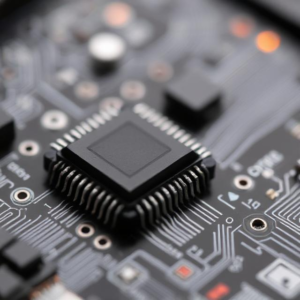What is a Bandgap Reference Circuit?
A bandgap reference circuit is a type of electronic circuit used to generate a stable voltage that does not change with temperature or power supply fluctuations. This stable voltage is often used as a reference for other circuits, like analog-to-digital converters (ADCs) or digital-to-analog converters (DACs), or any system that needs a reliable and constant voltage.
Think of it like a “voltage anchor” that stays steady no matter what happens around it.

What Does “Bandgap” Mean?
The term “bandgap” comes from semiconductors—materials like silicon that are used in most electronics. A bandgap is the energy difference between two regions in a semiconductor:
- Valence band (where electrons are in a lower energy state).
- Conduction band (where electrons have enough energy to flow and conduct electricity).
In simple terms, bandgap refers to the energy needed to make electrons move and conduct electricity. This energy gap is a crucial factor when designing semiconductors and circuits.
The bandgap reference circuit uses the properties of this energy gap to generate a stable reference voltage.
How Does It Work?
The key idea behind a bandgap reference circuit is that it takes advantage of the temperature dependence of the voltage across a diode (a small semiconductor device) and combines it with the temperature dependence of the voltage across a transistor. By cleverly combining these two effects, the circuit creates a voltage that remains stable over a wide range of temperatures.
Here’s how the circuit works in more detail:
- Diode Voltage Behavior:
- A diode (a one-way current device) has a voltage drop across it when current flows through it. This voltage drop decreases with temperature (it gets smaller as it gets hotter).
- Transistor Behavior:
- A bipolar junction transistor (BJT) also has a voltage drop across it, but this voltage drop behaves in the opposite way—it increases with temperature.
- Combining Effects:
- The bandgap reference circuit uses both of these effects by combining the voltage from the diode and the transistor in a special way. The diode’s decreasing voltage with temperature and the transistor’s increasing voltage are combined to cancel out each other’s temperature dependence.
- By carefully tuning the circuit, the result is a constant voltage—a voltage that stays nearly the same, no matter how hot or cold the environment gets.
Key Features of Bandgap Reference Circuits:
- Stable Voltage:
- The most important feature of a bandgap reference circuit is that it produces a stable voltage. This makes it ideal for situations where you need a reliable reference, like in analog-to-digital conversion.
- Temperature-Insensitive:
- Bandgap reference circuits are designed to produce a voltage that is almost independent of temperature, so they work well in a wide range of environments. For example, the voltage can stay steady from -40°C to 125°C, which is important in many electronic systems that operate in varying temperatures.
- Precision:
- Bandgap references are known for being very precise. They are accurate to within a few millivolts, making them very useful for high-accuracy applications.
- Low Power:
- These circuits are designed to consume very little power, making them perfect for battery-powered devices.
Typical Applications:
- Voltage Regulators: Bandgap references are often used in voltage regulators to ensure that the output voltage remains constant, even if the input voltage or temperature changes.
- Analog-to-Digital Converters (ADC): When converting analog signals to digital, an ADC needs a precise reference voltage. Bandgap reference circuits provide that stable voltage.
- Power Management: Devices that need stable power supplies in fluctuating conditions (like smartphones or sensors) often use bandgap references.
- Calibration Systems: In systems that require accurate calibration (like measuring instruments), the stable reference voltage ensures measurements are precise.
An Easy Analogy:
Think of a bandgap reference circuit like a thermometer that gives you a precise, fixed reading no matter the weather. Imagine you have two thermometers:
- One thermometer gets hotter as the temperature rises.
- The other gets colder.
Now, if you combine these two thermometers in just the right way, you can get one reading that stays the same no matter what the temperature is. In the bandgap circuit, the diode and transistor are like these two thermometers—one reacts to temperature by decreasing voltage, and the other increases it. Combining them gives you a stable, consistent result: the reference voltage.
In Summary:
A bandgap reference circuit provides a stable voltage that does not change with temperature or power supply fluctuations. It uses the properties of semiconductors (like diodes and transistors) to create a voltage that remains constant across a wide range of temperatures. This makes it very useful in applications where a reliable reference voltage is needed, like in voltage regulators or analog-to-digital converters.











